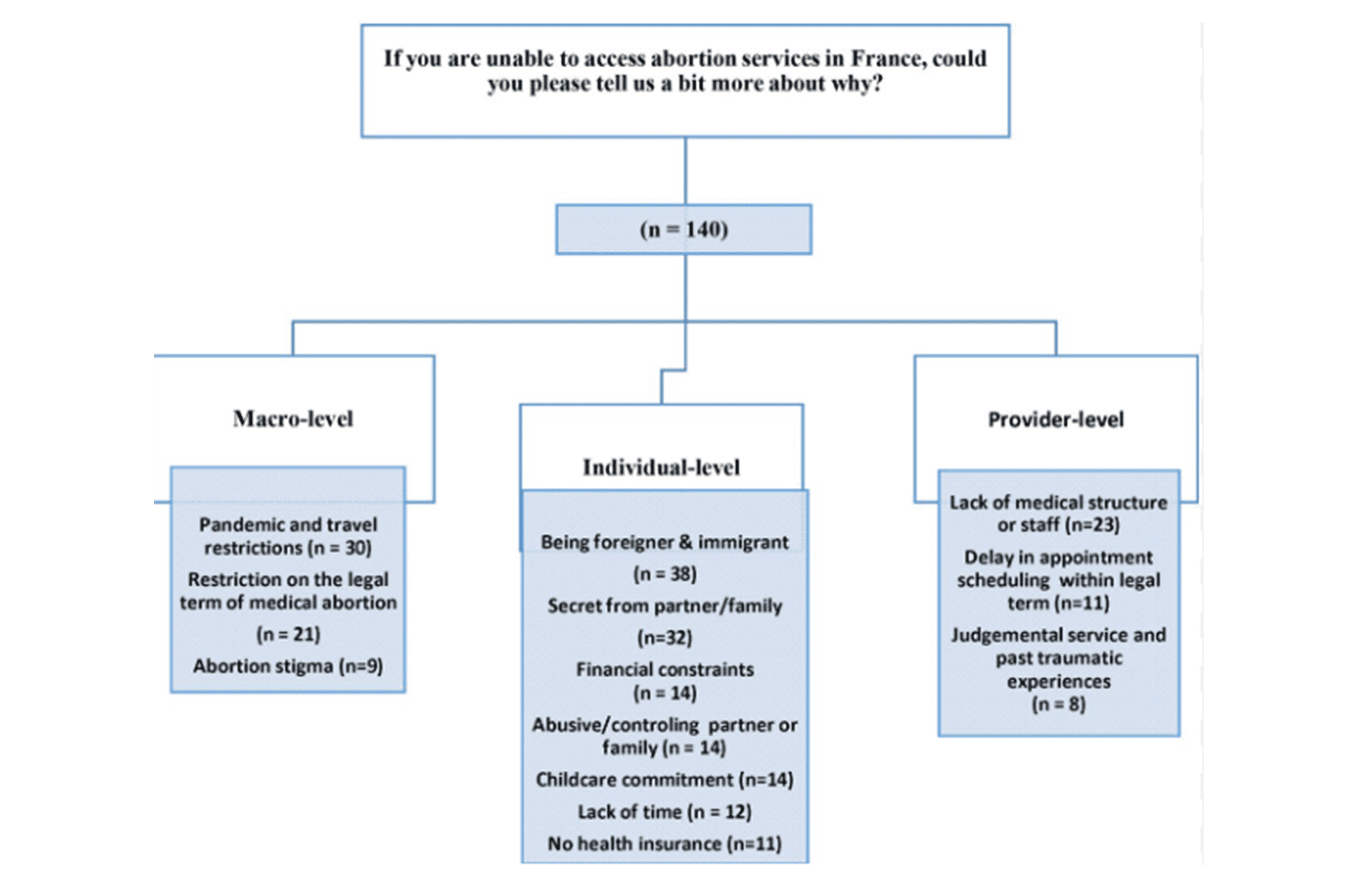
A 2021 study in France found many structural reasons why women decided to access abortion pills via teleconsultation and have abortions at home, as summarised in this chart. Could this situation be relevant in the UK as well? The chart above suggests this is a question that studies in more countries should be carried out to answer, including where access to services is thought to be very good.
Structural barriers or patient preference? A mixed methods appraisal of medical abortion use in England and Wales
by Katy Footman, Health Policy 2023;132:June 2023, 104799 (Open access)
Abstract
Although patient choice of abortion method is a key component of quality care, medical abortion (MA) has become the most common method (87%) in England and Wales, as in many countries worldwide. This research aimed to critically examine factors influencing the growth in MA use in England and Wales. Mixed methods were used, combining multi-level regression analysis of national abortion statistics (2011-2020) and key informant interviews with abortion service managers, commissioners, and providers (n=27). Overall trends have been driven by growth in MA use for abortions under 10 weeks in the private, non-profit sector. Variation in MA use between patient sub-groups and regions has narrowed over time. Qualitative findings highlight health system constraints that have influenced the shift towards MA, including workforce constraints, infrastructure requirements, provider policies, cost, and commissioning practices involving under-funding and competition, which have caused the private non-profit sector to limit method choice across their services to remain financially viable. While removal of legal restrictions on MA has expanded choice, similar policy progress has not been seen for surgical methods. The study concludes that abortion method choice has been constrained by structural health system factors, with potential negative consequences for service acceptability, inequalities, and patient-centredness.
and
Revolution in abortion care? Perspectives of key informants on the importance of abortion method choice in the era of telemedicine
by Katy Footman, SRHM 2023;31(1), 2149379 (Open access)
Patient choice of medical or surgical abortion is a standard of quality abortion care, but the choice of surgical abortion is constrained in England and Wales, particularly since the COVID-19 pandemic and introduction of telemedicine. This qualitative study explored the perspectives of abortion service providers, managers, and funders on the need to offer a choice of methods within early gestation abortion services in England and Wales. Twenty-seven key informant interviews were conducted between August and November 2021, and framework analysis methods were used. Participants presented arguments both for and against offering method choice. Most participants felt that it was important to maintain choice, although they recognised that medical abortion suits most patients, that both methods are very safe and acceptable, and that the priority for abortion services is to maintain timely access to respectful care. Their arguments related to practicalities around patient needs, the risk of reinforcing inequalities in access to patient-centred care, potential impacts on patients and providers, comparisons to other services, costs, and moral issues. Participants argued that constraining choice has a greater impact on those who are less able to advocate for themselves and there were concerns that patients may feel stigmatised or isolated when unable to choose their preferred method. In conclusion, although medical abortion suits most patients, this study highlights arguments for maintaining the option of surgical abortion in the era of telemedicine. More nuanced discussion of the potential benefits and impacts of self-management of medical abortion is needed.



